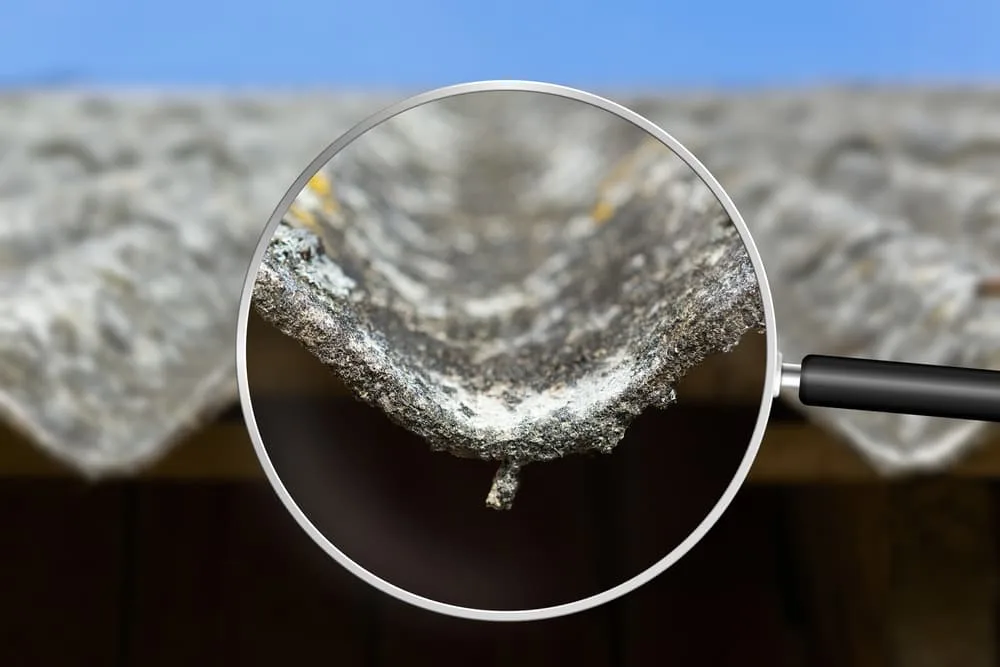His children would say he always had a bit of a cough, though it was nothing too serious. When James Battreall was diagnosed with acute bronchitis in 2018, it was the first of two misdiagnoses before doctors finally discovered what was actually going on.
A couple of months later, Battreall was diagnosed with mesothelioma, a terminal cancer that affects the mesothelial cells that line the lungs, chest, heart and abdomen. The cancer is directly caused by prolonged exposure to asbestos, although symptoms usually do not develop until 30 to 40 years after initial exposure. Battreall had been exposed to asbestos throughout his career as he remodeled bathrooms, installed tiles and removed boilers. Unfortunately, the prognosis is usually grim, with an average life expectancy of just 12 to 15 months optimistically. The prognosis fluctuates depending on how advanced the cancer is.
Although Battreall will always live with the disease, scans from his doctor visits indicate the cancer has not spread. For him, living with this disease means choosing to stay focused and avoid dwelling on things he cannot change. “The way that I deal with it is I don’t even think about it, really,” he attests. “I just do what I have to do.” Walking the line between coping with his disease and not letting it overshadow everything else, Battreall says, “My life is not consumed by the disease, although I’m constantly aware of it.”
Upon realizing that his diagnosis was solely dependent upon his asbestos exposure, the Chicago native felt frustrated and misled. He realized that manufacturers were selling their remodeling and tile installation products as long-lasting, durable and heat resistant—attractive descriptors for unsuspecting consumers who were just trying to use the best materials on the market. Battreall, unfortunately, was one of them.
“I’m ticked off about it, but you got to deal with the hand you’re dealt,” he says.
A “Chicago Kind of Guy”
The 68-year-old is kind and determined, yet straightforward—what you see is what you get. He made a career for himself over the years, relying on honorable hard work and a substantial amount of grit.
“Despite suffering from a debilitating disease, Jimmy exudes an unshakeable calm and cool confidence that uplifts the mood of everyone around him,” says Wyatt Berkover, one of the attorneys who took on Battreall’s case.
The journey from discomfort to diagnosis was anything but simple for Battreall and his family. During the summer of 2018, he was boating off Miller Beach on Lake Michigan with his wife, Deborah, and two of his sons. During an unfortunate boating incident, he sustained an injury to the left side of his chest. While visiting his family physician, he was informed that he had fluid in his lung. Recalling a similar experience his cousin endured after sustaining a chest injury from a snowmobile accident, Battreall assumed his outcome would be the same. His cousin also had fluid removed from his lungs and later recovered from his injury.
After doctors removed the fluid from Battreall’s lungs, he received his second misdiagnosis. His physician informed him that he had walking pneumonia. He tossed the news around in his mind, along with his previous diagnosis. A few days later, his physician took X-rays of his chest. Shortly after reviewing them, she approached him cautiously with an unexpected question.
“Have you been exposed to asbestos?”
The Danger Unforeseen
It was 1969, and Battreall was working full time as an ironworker at Local 1. He continued to do the job until 1972, before remodeling bathrooms and flipping cars. He also worked as an operating engineer at Local 150. He would later venture out on his own to start a crane operating business. Battreall was good with his hands, quick on his feet and willing to put in the work.
He never envisioned the path his career would take, from ironworking to eventually owning a disco club. It was a fun opportunity that he stumbled into with one of his friends. The pair installed a large dance floor, musical equipment from Battreall’s apartment and a mirrorball to top it all off. “I mean, we decked this place out,” he reminisces. “One week before we opened, ‘Saturday Night Fever’ came out.”
The line for the dance club stretched down the street and around the block. The women were pretty, the music was incredible and the energy was contagious. “We rocked that place for, I don’t know, a year and a half,” says Battreall.
Before becoming a club owner, Battreall worked as a commodity broker. During this time, he met and began dating the woman who would become his wife. Deborah was a commodity broker, as well. The pair got married in Chicago on May 23, 1980. They had three sons, although one of them passed away.
Throughout his battle with mesothelioma, Battreall has remained grateful to his wife for her support and strength. “My wife is a rock,” he says. “I mean, she’s been fabulous. She just does whatever, whatever it takes to get by.”
Manufacturers in the U.S. heavily advertised the seemingly perfect results of working with asbestos. Known for heat, water and electrical resistance, asbestos was used as an insulator for steam engines, turbines, boilers, ovens and more. Asbestos became a primary component of home construction until the 1980s. Americans were likely to find asbestos in cement, tiling and roofing materials, wire insulation and several other places.
“It was never a thought,” he recalls. “I never even gave it a second thought.”
Battreall still owns a box of tiles that advertises the long-lasting benefits of asbestos, a haunting reminder of a silent danger he and thousands of other Americans were exposed to.
Between the 1930s and 1940s, researchers began noticing a link between asbestos exposure and cancer. It wasn’t until the 1970s that asbestos was classified as a hazardous air pollutant when the Clean Air Act was established. The Environmental Protection Agency (EPA) was given the power to regulate its usage and disposal. In 1976, the Toxic Substances Control Act was passed, and the EPA had the authority to place restrictions on asbestos-containing products. Slowly, the government attempted to phase out the toxic substance, a series of legislative actions that many Americans believe took far too long.
The U.S. still has not banned the use of asbestos.
An Unbreakable Will
After his X-rays revealed Battreall might have mesothelioma, he visited a physician at Rush University Medical Center. As they sat down in his office, the physician divulged his treatment plan. His recommendation for Battreall was to undergo a pneumonectomy, an invasive surgical procedure that involves removing the affected lung.
“He kind of sat me down in his office and explained, ’This is what we’re going to do.’ You know, just kind of nonchalant,” he recalls. “I’m thinking, ‘Whoa, you’re gonna take my lung?’”
The physician told him that undergoing this procedure was the easiest way to ensure the best possible outcome. Surprised and unsure of the doctor’s recommendation, Battreall sought a second opinion. He visited Dr. Hedy Lee Kindler, director of the mesothelioma program at the University of Chicago Comprehensive Cancer Center.
After her team confirmed his diagnosis again, Kindler offered her recommendations for an alternative surgical approach. She suggested he undergo a pleurectomy. Instead of removing one of his lungs—a procedure widely practiced over the previous decade—they would leave the lung in place and remove as much of the cancerous pleural lining as possible. Dr. Jessica Donington, chief of the Section of Thoracic Surgery, performed the procedure.
“There were, I don’t know, 12 people in the operating room that I can remember,” Battreall says. “An all-female crew and they were just fabulous.”
Donington removed about two pounds of cancerous tissue from the outside of his lung and his chest wall. Despite the success of the procedure, Battreall knows he will never be cancer free. Donington describes it as attempting to peel an orange. Once you remove the peel, you can never get rid of all of the pith underneath it.
Following the procedure, Battreall spent the next six months recovering before beginning chemotherapy treatments. Just three months into his recovery, he was already beginning to gain back his lost weight. As he completed his first round of chemotherapy, one of Battreall’s sons, an avid tennis player, made an unexpected connection.
He introduced his father to a cancer specialist in Miami. Battreall and his wife made the trip to South Miami Hospital, where the specialist recommended Battreall try a new tumor-treating field device offered in the hospital’s cancer center. Little did Battreall know, he would begin using the first FDA-approved breakthrough treatment for mesothelioma patients in 15 years.
Optune Lua, previously named the NovoTTF-100L System, is a portable device designed for use with standard dual drug chemotherapy for patients diagnosed with inoperable malignant pleural mesothelioma. It was created by Novocure, a global oncology company leading the way in new therapies for solid tumors.
He began using Optune Lua in combination with his chemotherapy treatment. A little over a year ago, however, his doctors decided it was time to try a different approach. Battreall was transferred from the University of Chicago Comprehensive Care Center to the Robert H. Lurie Comprehensive Cancer Center of Northwestern University, where he is currently undergoing immunotherapy treatment under the care of Dr. Nisha A. Mohindra.
Battreall feels fortunate to have been diagnosed with a treatable form of the disease. Recalling his physician’s initial explanation of each type of mesothelioma, he knows that the outcome could have been even more grave.
“The way that it was explained to me is that there are three types,” he says. “For two [of the types], they just send you home to hospice or whatever, you know, ‘Have a good day.’ The third was treatable, which it just so happened I was lucky enough to have.”
“The First Thing I Did Was Seek Legal Counsel”
Michael Maienza, part of a trio of Vogelzang Law attorneys who took on Battreall’s case, was encouraged by Battreall’s confidence and commitment to justice.
“In this type of litigation, it’s always a double-edged sword,” Maienza says. “You want to dive into it as quickly as possible because you know that your client is fighting a terminal battle against the clock. However, you want to have as many of the facts as possible before you go into battle.”
As his attorneys solidified their plan for his case, Battreall remained focused and determined. After spending a significant portion of his life doing the best he could with the lack of information he was provided, obtaining justice for himself and his family was well worth the fight.
“Knowing that our client was busting his butt every day, fighting, invigorated both myself, some of the law clerks and other staff members on the case as well,” Maienza recalls.
Battreall delivered his deposition on April 13, 2019, in a hotel room in Indiana. He recounted the decades he spent working with and around asbestos, unaware then that the dangerous substance would be responsible for the events that would lead him there that day. In February 2020, his case was settled.
“Now, it’s just a question of trying to keep this stuff at bay for as long as we can,” he shares.
Battreall reminisces kindly on the team of doctors, specialists and Vogelzang Law attorneys who have helped him throughout his battle with the disease. Nearly a year later, Battreall continues to adjust to the toll mesothelioma takes on his body. With his wife and children by his side, he continues to move forward with the same purpose and determination, which has fueled him throughout his life.



